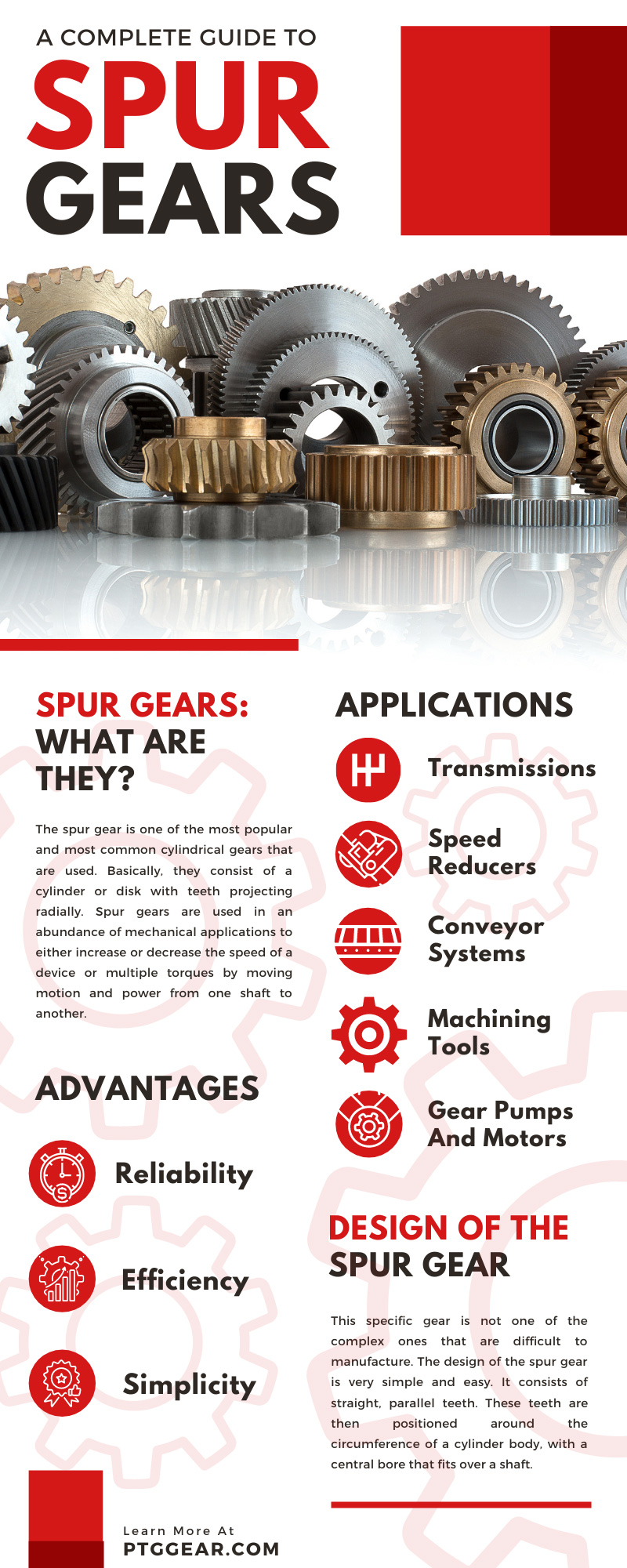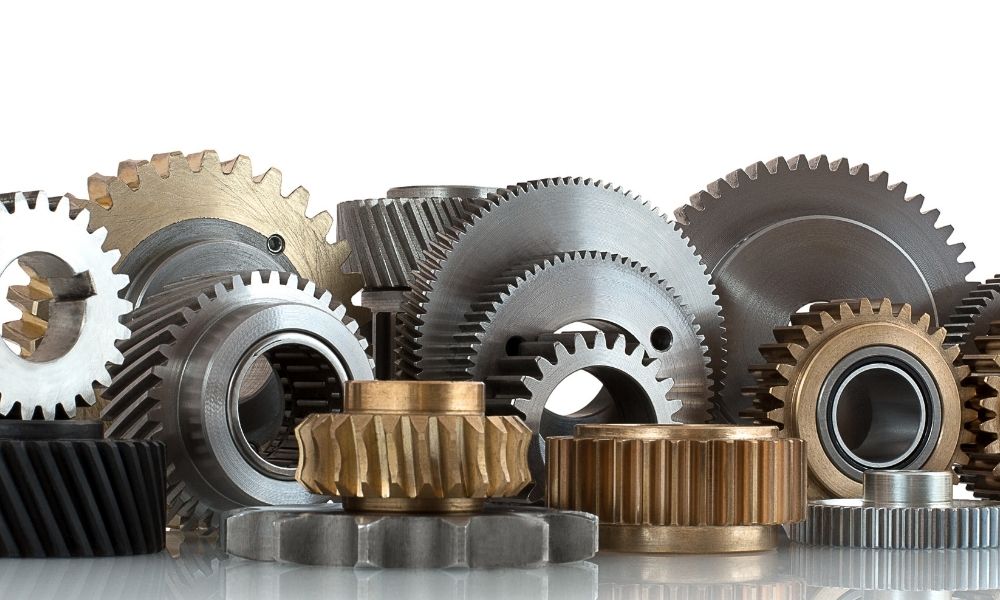Spur gears are a very important and a crucial part of many mechanical operations. If you have ever wondered what a spur gear is and what role it plays in gearboxes, then today is your lucky day—there is no need to wonder anymore. Here at Blaz-Man Gear Inc. Power Transmission Group, we want to do our part in sharing our knowledge and experience with you to provide a solid foundation on all things gears. The more information you have, the better you will understand the inner working of spur gears.
To take a more in-depth look at this specific type of gear, we have outlined and put together a complete guide to spur gears. Continue reading below to find all the information you could need, as well as information about how you can purchase this specific type of gear from our online store.
Spur Gears: What Are They?
Before we dive into the details regarding all things spur gears, it is important to set a solid foundation of what a spur gear is. The spur gear is one of the most popular and most common cylindrical gears that are used. Basically, they consist of a cylinder or disk with teeth projecting radially. Spur gears are used in an abundance of mechanical applications to either increase or decrease the speed of a device or multiple torques by moving motion and power from one shaft to another. These gears are easy to manufacture and are suitable for a wide range of applications.
Design of The Spur Gear
This specific gear is not one of the complex ones that are difficult to manufacture. The design of the spur gear is very simple and easy. It consists of straight, parallel teeth. These teeth are then positioned around the circumference of a cylinder body, with a central bore that fits over a shaft. This design is very common and used for an abundance of gearboxes and industrial applications.
Applications
The main job of a spur gear is to transfer motion and power from one shaft to another. When this transfer occurs, it can alter not only the speed of the machine, but also the torque and positioning of the system. It is important to note that in many instances, the spur gear is specifically used for any mechanical or industrial operation that has a lower speed. In addition to that, the environment also needs to be able to handle a higher noise threshold because the spur gear is not the quietest of the gears.
Here is a quick overview of the different common application of spur gears:
- Transmissions
- Speed Reducers
- Conveyor Systems
- Machining Tools
- Engines and Mechanical Transportation Systems
- Gear Pumps and Motors
Advantages
There are a few different reasons that spur gears are commonly used, and that is because of the advantages that come with them. We have outlined some of the advantages below:
- Reliability—There is very little chance that the spur gears are going to slip during operations. The way that a spur gear is designed also allows for it to be durable, decreasing the risk of premature failure of the operation.
- Efficiency—Spur gears can successfully transfer large amounts of power across multiple gears. This is done with little power loss at all, thus making it an extremely efficient operation.
- Simplicity—The overall gear is not complex and is easy to use and implement.
- Cost-Effective—Due to the fact that the design of the spur gear is not complex, it allows for it to be easily manufactured in a cost-efficient way. If it costs less to manufacture, it costs less to purchase.
- Constant Speed Drive— The precision of constant velocity of the gears when increasing and decreasing the shaft is a huge advantage.
Who wouldn’t want to use this type of gear when it comes with all of these benefits? You can’t really ignore a gear that is not only reliable but is also durable and cost-effective. That is a win-win-win if you ask us!
A Few Terms To Learn
Here are a few important terms if you want to learn more about spur gears:
- Pitch Circle—The circle that is found from the number of teeth and the diametral pitch.
- Diametral Pitch—The ratio between the number of teeth to the pitch diameter.
- Pitch Diameter—The diameter of the entire pitch circle. It is important to note that this is a critical component for measuring the center distances of mating spur gears.
- Module—This term is the metric used for the diametral pitch.
- Addendum—To find this, measure the height or distance by which the tooth goes beyond the pitch circle.
- Dedendum Addendum —The depth of a tooth space below the pitch circle.
- Whole Depth—The total depth of the tooth space. The whole depth can also be found by adding the addendum plus the dedendum.
These are not all of the terms that correspond with spur gears; however, they are some of the terms that might help you better understand the inner workings of the gear. Do your part and research these terms to get a better understanding of all things spur gears.
When creating a complete guide to spur gears, we wanted to be able to explain the information in a way for everybody to understand. If any of the information above confused you or you want to learn more, please feel free to reach out to our professionals here at Blaz-Man Gear Inc. Power Transmission Group. We also have other blog posts on different types of gears and other insights on the products that might be beneficial to take a look at as well.
In addition, if you are in search of having custom spur gears or gearboxes made or if you are in the market to purchase any other gears, make sure to take a look at our site. It doesn’t matter how specific your needs are—we can help you create any custom gear you are in the market for. It is our job to help you!

